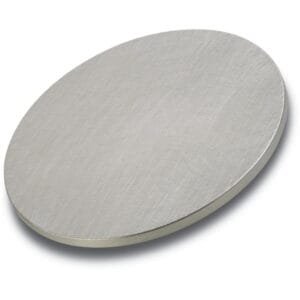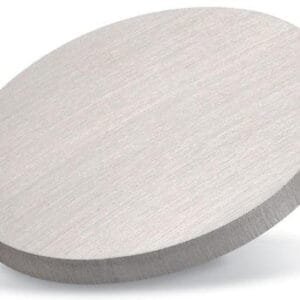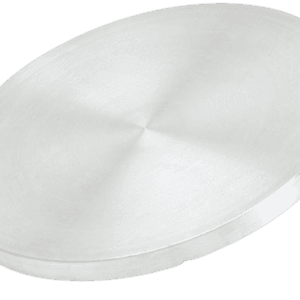Stainless Steel Sputtering Target Description
Stainless Steel Sputtering Target is a specialized material utilized in the sputter deposition process, which is essential for producing thin films used in various applications across electronics, optics, and coatings industries.
Stainless steel, an alloy primarily composed of iron, chromium, nickel, and other elements, is employed in sputtering targets due to its high purity and suitability for thin-film deposition. The exact composition of the stainless steel can vary based on the grade and specific use case.
During sputtering, the stainless steel target is bombarded with high-energy ions within a vacuum chamber. This bombardment dislodges atoms or particles from the target material, which then deposit onto a substrate to form a thin film that mirrors the composition of the target.
Related Product: Chromium Sputtering Target
Stainless Steel Sputtering Target Specifications
| Compound Formula | Fe/Cr/Ni |
| Molecular Weight | – |
| Appearance | Metallic Target |
| Melting Point | – |
| Density | – |
| Available Sizes | Dia.: 1.0″, 2.0″, 3.0″, 4.0″, 5.0″, 6.0″ Thick: 0.125″, 0.250″ |
Stainless Steel Sputtering Target Handling Notes
Indium bonding is recommended for Stainless Steel Sputtering Targets due to their inherent characteristics, such as brittleness and low thermal conductivity. These properties can make the target more susceptible to thermal shock during sputtering. Indium bonding helps address these issues by providing a more stable and reliable attachment of the target to the sputtering system, ensuring better performance and longevity.
Stainless Steel Sputtering Target Application
The use of a Stainless Steel Sputtering Target enables precise control over the deposition process, facilitating the creation of thin films with specific properties tailored to the requirements of various applications. This level of control is crucial for achieving desired characteristics in industries such as electronics, optics, and coatings.
Stainless Steel Sputtering Target Packaging
Our Stainless Steel Sputtering Targets are meticulously handled during storage and transportation to ensure they retain their quality and integrity in their original condition.





Reviews
There are no reviews yet.